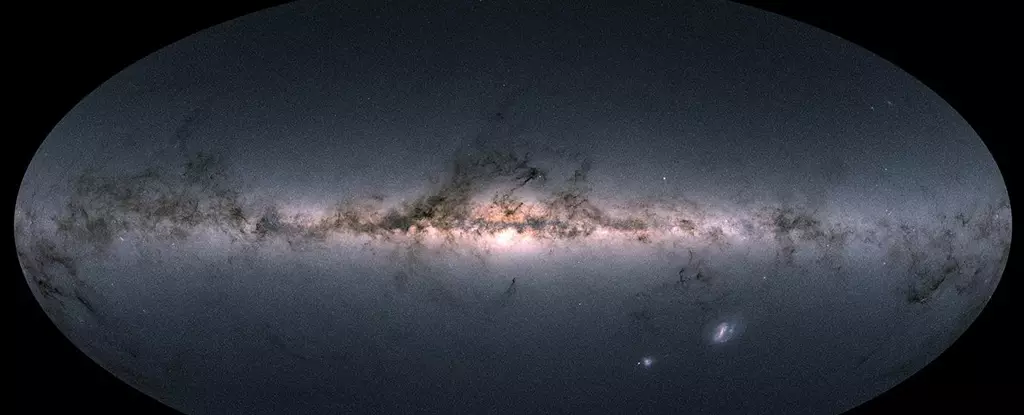The Milky Way, a majestic spiral galaxy that we call home, is not just a serene gathering of stars in the vastness of space. It owes its mass and structure to a series of collisions and mergers with other galaxies over billions of years. This messy process of cosmic interactions is not unique to our galaxy; it is a phenomenon observed throughout the Universe. Currently, the Milky Way is in the process of assimilating its two satellite galaxies, the Large and Small Magellanic Clouds, sealing their fates as future additions to our galaxy.
Recent research has challenged the conventional wisdom about the Milky Way’s last major merger. While previous estimates placed this event between 8 and 11 billion years ago, new findings suggest a much more recent timeframe of less than 3 billion years ago. The European Space Agency’s Gaia mission, launched in 2013, has played a pivotal role in unraveling the galactic history by meticulously mapping the positions and motions of over 1 billion astronomical objects, predominantly stars. These precise measurements have unveiled subtle “wrinkles” in the Milky Way, remnants of past mergers that influence the movement of stars within the galaxy.
Evidence from the Stars
One of the key pieces of evidence supporting the recent merger hypothesis is the presence of an Fe/H-rich region in the Milky Way where stars exhibit highly eccentric orbits. The Fe/H ratio serves as a chemical signature for stars, indicating a common origin for those with similar fingerprints and orbits. This distinct group of stars, dubbed ‘the Splash,’ is believed to have originated from a Fe/H-rich progenitor that was disrupted and heated during a merger event. These findings align with a scenario where a recent collision known as the Virgo Radial Merger (VRM) reshaped the Milky Way’s stellar composition.
Through extensive simulations and data analysis, researchers have pieced together the timeline of the Milky Way’s mergers. By comparing the observed shapes and distribution of wrinkles in the galaxy with simulated mergers, scientists have pinpointed the most likely scenario of a dwarf galaxy colliding with the Milky Way approximately 2.7 billion years ago, known as the Virgo Radial Merger. These investigations shed light on the complex history of our galaxy, indicating that the VRM may have involved multiple entities entering the Milky Way simultaneously.
As Gaia continues to provide astronomers with unprecedented data on the Milky Way, our understanding of the galaxy’s evolutionary path is evolving rapidly. The intricate dance of cosmic collisions and mergers that shaped the Milky Way is gradually being unveiled, painting a more detailed picture of how galaxies form and evolve. With each new release of data from the Gaia mission, researchers gain fresh insights into the mysteries of our galactic neighborhood, reshaping our perceptions of the Milky Way’s tumultuous past.
The Milky Way’s history is a tapestry woven from celestial mergers and cosmic upheavals, each imprinting a unique chapter in the galaxy’s story. By delving into the subtle wrinkles and orbital quirks of stars within the Milky Way, astronomers can decipher the remnants of past collisions and mergers, shedding light on the galactic processes that have sculpted our cosmic home. As we continue to explore the depths of space and unravel the mysteries of galactic evolution, the Milky Way stands as a testament to the dynamic and ever-changing nature of the Universe we inhabit.


Leave a Reply